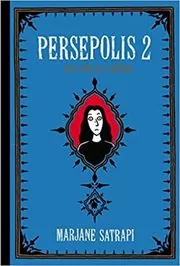The Fountainhead Summary
Author: Ayn Rand
This page offers our The Fountainhead summary (Ayn Rand's book). It opens with an overview of the book, and follows with a concise chapter-by-chapter summary.
Drafted with AI assistance and reviewed by a human editor.
As an Amazon Associate, we earn from qualifying purchases (at no extra cost to you).
This book has 6 recommenders!
Overview
An avant-garde architect named Howard Roark finds himself expelled from his architecture school for his refusal to abide by antiquated traditions. He chooses to move to New York where he works with a discredited architect, Henry Cameron, who Roark highly admires. Meanwhile, Peter Keating, Roark's former schoolmate, also ends up in New York, working for a top architectural company run by the renowned Guy Francon. While Roark and Cameron's works are underappreciated, Keating's ability to charm and appease his superiors leads him to rapid success. However, Roark's uncompromising approach to design ultimately results in him working at a granite quarry in Connecticut.
At the quarry, Roark feels an intense draw towards Dominique Francon, the beautiful and mercurial daughter of Guy Francon. Dominique shares a similar disgust for society's mediocre architecture and is searching for something more. After a disturbing encounter, Dominique comes to realize that she deeply admires Roark and his work. Despite this, she publicly attempts to sabotage his career while privately meeting with him. Ellsworth Toohey, an architectural critic with socialist views, perceives Roark as a threat and manipulates a businessman into suing Roark for his unconventional architectural style, resulting in Roark losing his business. Dominique marries Peter Keating as a form of self-inflicted punishment for her feelings towards Roark.
Gail Wynand, a jaded publisher who capitalizes on public opinion, becomes infatuated with Dominique and offers Keating financial gain and prestige in exchange for his wife. Dominique, expecting Wynand to be worse than Keating, is surprised to find him principled. Wynand unknowingly becomes friends with Roark, not aware of the latter's past with Dominique. Roark, intrigued by the concept of economical housing, agrees to design a public housing project under the condition that his design remains unaltered. Upon discovering that his design has been compromised, Roark destroys the project and is arrested. Wynand initially supports Roark but later succumbs to public opinion. However, Roark's passionate defense about selfishness and individuality sways the courtroom, resulting in his acquittal. Roark marries Dominique and is commissioned by Wynand to design a skyscraper symbolizing the power of the individual.
Edited by
Software engineer whose passion for tracking book recommendations from podcasts inspired the creation of MRB.
Lead investor at 3one4 Capital whose startup expertise and love for books helped shaped MRB and its growth.







Comments
Did we miss something? Have feedback?
Help us improve this page by sharing your thoughts